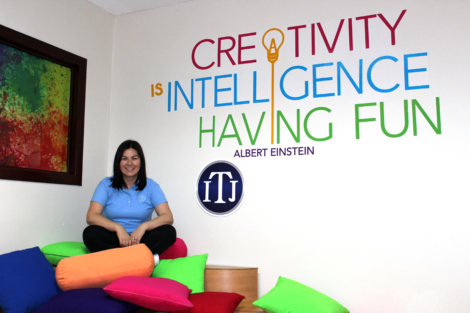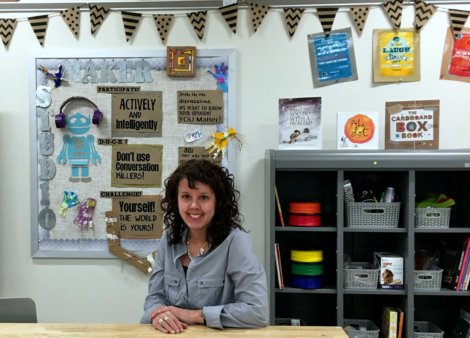
Teaching Sensitive Topics with BrainPOP – A CBE Aha! Moment 9.18
Posted by cemignano on
As part of the certification process, we ask educators to reflect on BrainPOP’s features and tools and brainstorm ideas for replacing and improving past teaching practices. To guide them in considering new approaches, we ask educators to identify an “Aha Moment” for which our offerings would be an effective option. We’re excited to share September CBE of the Month’s Aha! Moment – we think Nay will inspire you to reflect and improve your own approaches!
Tell us your BrainPOP “Aha! Moment” from the certification process. What specific use or application of BrainPOP excited you during this course? How did it change your expectation for using BrainPOP in your teaching practice?
When I discovered My BrainPOP! We’ve had a subscription for a long time with BrainPOP, but used it mostly as a visual aid for the videos. I knew there were some activities available, but never imagined each of my students could have an account to access all content 24/7, work on games, activities, quizzes, etc.. and submit them to me. BrainPOP became my core tool for Science and Geography and a lot of my lessons were planned around it. I just love the way students enjoy each moment of our class when we’re using BrainPOP.
What is a specific lesson or unit you’ve taught in the past that you can re-formulate to bring in the new tools, features, or content you discovered through the CBE process?
One of my favorite lessons to teach with BrainPOP is eating disorders. I didn’t use a lot of digital resources during my first years because sites displayed very graphic information and the content was too technical for my ELLs. It was hard to find age appropriate resources in this sensitive topic. When I started using BrainPOP I felt so relieved that my fifth graders were being exposed to a trusted site and no matter how much they explored on their own, everything was kid friendly, had the right vocabulary and it provided them with verified information. This, as many other topics, provoke curiosity among our students and we have to be very sensitive with the sites, links and digital resources we provide.
How will you integrate BrainPOP’s new features and tools to replace what you’ve done in the past?
I used to have a slideshow with bullet points and some images as a teaching resource for this topic. When I replaced it with BrainPOP, students were able to do so much, not only in school, but at home too! This topic usually takes a week to go through.
As an introduction we brainstorm ideas on what an eating disorder is, considering we just learned about the eatwell plate, overweight, underweight and malnutrition. Then, watch the BrainPOP movie with its appropriate pauses and write the keywords of the topic. Together, we try to come up with a definition for each word. By the way, students can play a movie as many times as they need using (with captions for our ELLs!). We discuss some cases of famous people that have gone through an eating disorder and how they managed to overcome it, or not. In this part of the lesson we set a mailbox on our desk for anyone to write a concern or a question. It’s very important to address the topic, from both the physical and psychological point of view.
Since we have Chromebooks 1:1, each student takes the review quiz and chooses an activity to show their learning by comparing and contrasting bulimia and anorexia. After submitting their work, we share some of the maps or movies in the SmartBoard and provide feedback as students present them.. As a homework, students get to explore the Related Reading and submit through Google Classroom a paragraph of what caught their attention. The next day, we discuss their ideas and wrap up our session with students writing a letter to a fictional friend who is going through an eating disorder and tell them how to get help and be supportive.
I love how we can explore a sensitive topic like this from different points of view, connect it to real life and create awareness in our students. Every year we get very interesting questions in our mailbox and some impressive letters of support.














